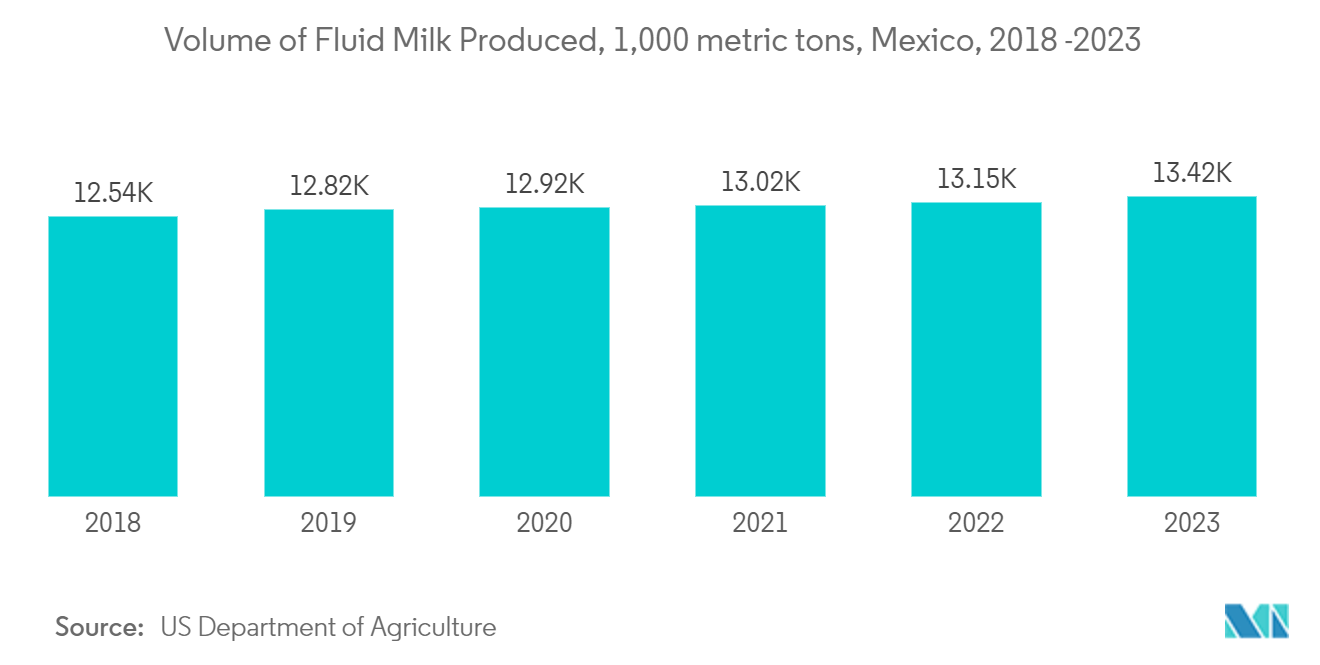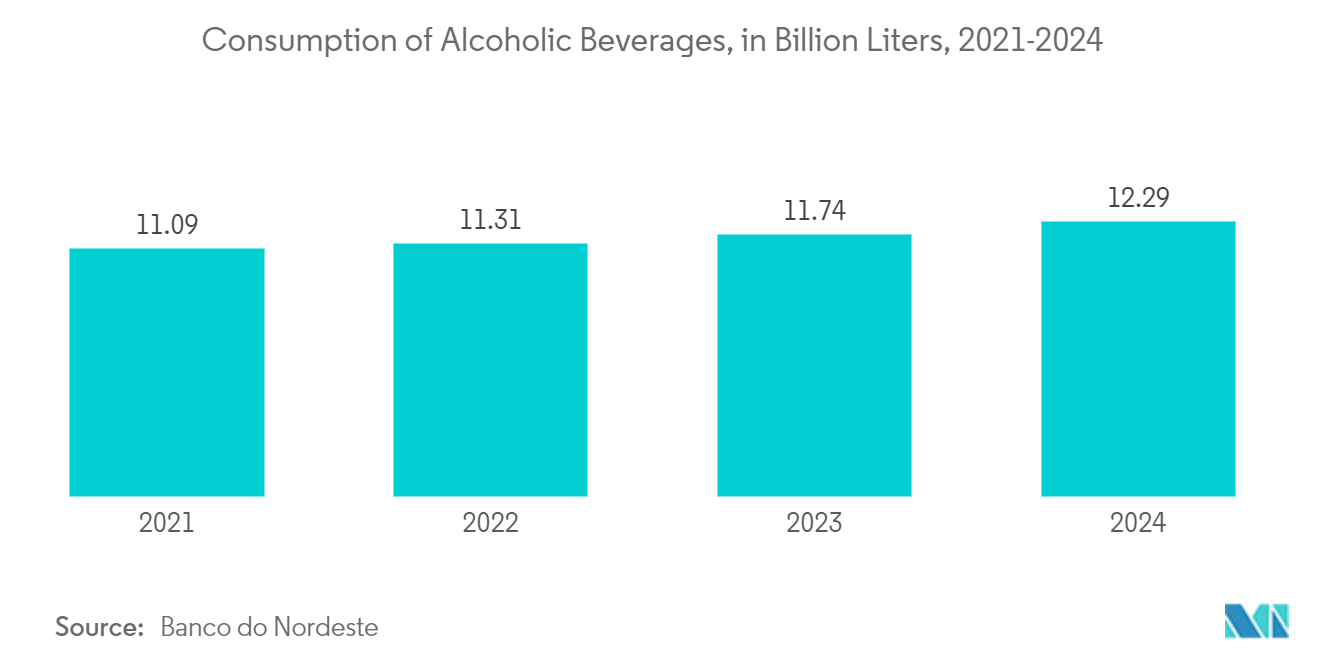Market Trends of Latin America Aseptic Packaging Industry
Aseptic Cartons to Witness Increased Demand in the Market Studied
- Aseptic cartons are food containers built from multi-layer packing, particularly for liquids like orange juice and soups. These containers are made of layers of paper, plastic, and metal. Once processed into a clean stream, the material is recyclable. Aseptic cartons are made up of approximately 70% paper (for stiffness and strength), roughly 24% polyethylene (used in four layers to seal the package hermetically), and nearly 6% aluminum foil (used as a barrier against air and light). The boxes keep liquids safe for a year or longer without refrigeration.
- As a result, food and beverage vendors are inclining toward aseptic packaging, considering cost and environmental benefits, especially in terms of ambient shipping and storage. Also, as aseptic packaging supports packaging through recyclable and eco-friendly pouches, which often target consumers who prefer small quantities and make purchases more frequently, the demand for such products is considerably high.
- This growth has been primarily driven by the increasing popularity of convenience and ready-to-eat products and the improvement in preservation technologies. In addition, the rising demand for organic and healthy foods has also led to the increased use of aseptic packaging in Brazil. Major aseptic packaging manufacturers, such as Tetra Pak, Amcor, and SIG Combibloc, have invested heavily in Brazil and are expected to continue in the coming years.
- Changing lifestyles and the consequent dependence of consumers on processed, packaged, and pre-cooked food and beverages are increasing the demand for aseptic packaging solutions. The advent of the supermarket culture has also altered the shopping landscape and has increased the need for packaging, especially in food and beverage products. The altering lifestyle of people has resulted in the shift to ready-to-eat products. In addition, these products are packed in aseptic packaging to ensure that the products remain uncontaminated, tamper-proof, and safe for consumption.
- Aseptic cartons for milk are processed at extremely high temperatures, which destroy any harmful bacteria in the milk. The milk is then instantly cartooned in a sterile environment into specialized packaging that prevents air from penetrating. The shelf-life of the milk becomes much longer after this operation. The demand for aseptic cartons for milk is increasing globally, as they protect the product from light and ambient oxygen, resulting in increased shelf life.
- According to the US Department of Agriculture, the Mexican dairy industry produced 13.42 million liters of milk in 2023, up from around 12.54 million metric tons in 2018. Such production growth is expected to support the market growth during the forecast period.

Brazil is Expected to Hold a Significant Share
- The Brazilian food industry is one of the primary consumers of aseptic packing, which extends the shelf life of food products and reduces contamination. Packaging is also employed in the pharmaceutical and medical sectors to minimize spoilage, improve product safety, and ensure product safety when used with sterilization or other packaging technologies.
- Market players invest in research and development to stay ahead of developing industries. Market trends in new product launches support market demand. Notably, the pharmaceutical industry's demand for aseptic packaging is also increasing. Governments across the country are increasing regulations on the healthcare sector to boost the growth of the aseptic packaging market.
- The Ministry of Health in Brazil regulates aseptic packing and ensures that it complies with the country's Good Manufacturing Practices regulations. Additionally, the Brazilian government established a Working Group in 2019 to discuss and develop strategies for using aseptic packing in Brazil.
- The aseptic packaging market is expected to expand in the country exponentially over the next couple of years. The growth rates included ready meals, breakfast cereals, baby food, sauces, dressings and condiments, processed meat, seafood, and soup. According to the Organic Trade Association, the consumption of organic packaged food and beverages in Brazil is expected to increase from USD 74 million in 2020 to USD 105 million in 2025.
- The market is expected to grow in the coming years as new technologies and innovations enable manufacturers to create more efficient and sustainable aseptic packaging solutions. Increasing consumption of alcoholic beverages in the region will boost the use of the bag in the box for wine packaging, cans for beers, and bottles for spirits. For instance, according to an article published by Banco do Nordeste, the consumption of alcoholic beverages in Brazil is expected to reach 12.29 billion liters by 2024 from 11.09 billion liters in 2021.


